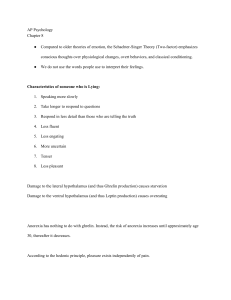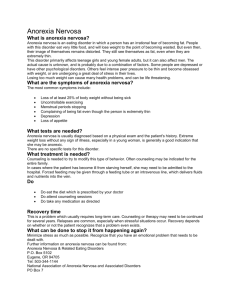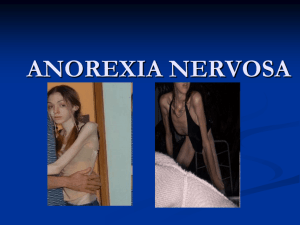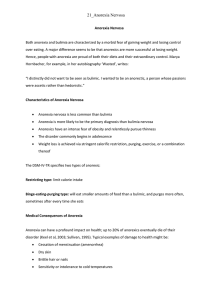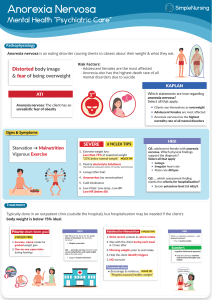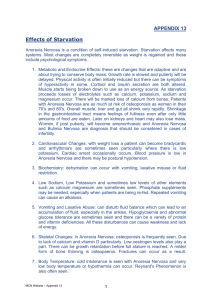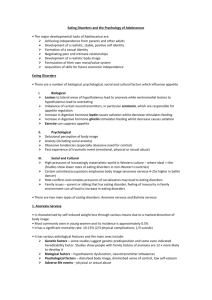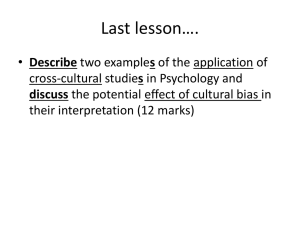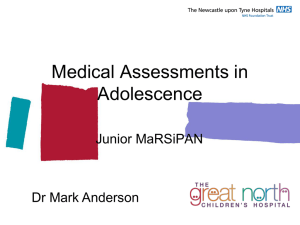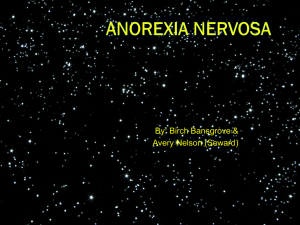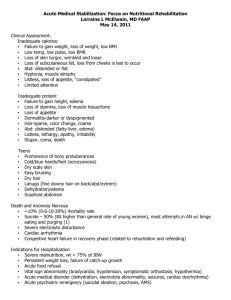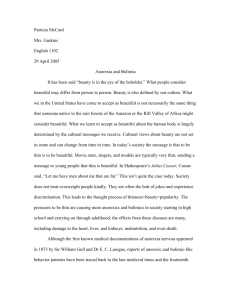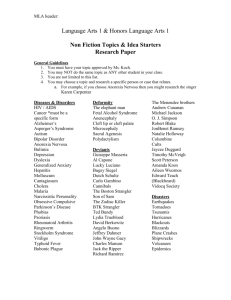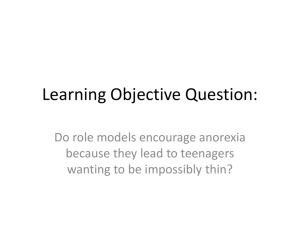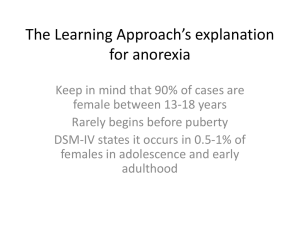bio explanation of anorexia
advertisement
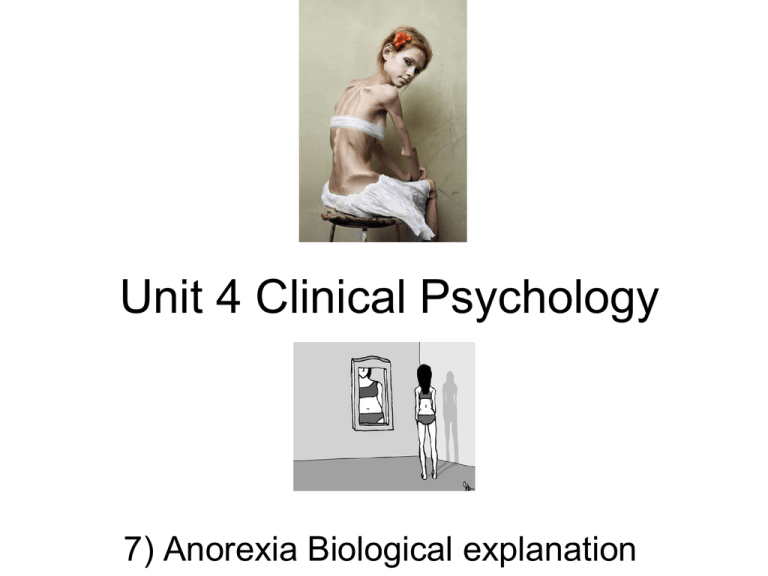
Unit 4 Clinical Psychology 7) Anorexia Biological explanation Homework check • Homework check – you should have considered the learning (behavioural) explanation for anorexia nervosa. • Let’s look at another explanation… Learning outcomes 1) Describe and evaluate the biological explanation of anorexia nervosa. Biological approach • Assumes our behaviour is controlled by the activity in the CNS, specifically the brain. • The brain itself is organised into regions which have different roles, so a malfunction in one region may cause a behavioural problem in the individual. • Malfunctioning of the hypothalamus plays an important role in the regulation of eating. Animal experiments which involve lesions in a particular part of the hypothalamus have led to either overeating or starvation in the animals. Biological approach • It is believed that noradrenaline acts on part of the hypothalamus which leads to eating; in contrast, it was found that serotonin suppresses appetite in non-human animals. • This biochemical importance has been used as an explanation for anorexia in humans. The lateral hypothalamus (LH) produces hunger and the ventromedial hypothalamus (VMH) depresses hunger. A malfunction here may be the cause of loss of appetite in some, and overeating in others. For anorexics it is as if their VMH is jammed on. Biological approach • Another type of biological explanation is that anorexia may run in families, so genetics could play a part. • Research in twins has shown that MZ have a higher concordance rate than DZ twins for anorexia. Holland et al (1984) found a 56% concordance rate in MZ twins, and only 5% in DZ twins. Task • Evaluate the biological approach explanations for anorexia nervosa. And finally… • Homework – research rational Emotive therapy as a therapy for someone suffering from anorexia nervosa.
